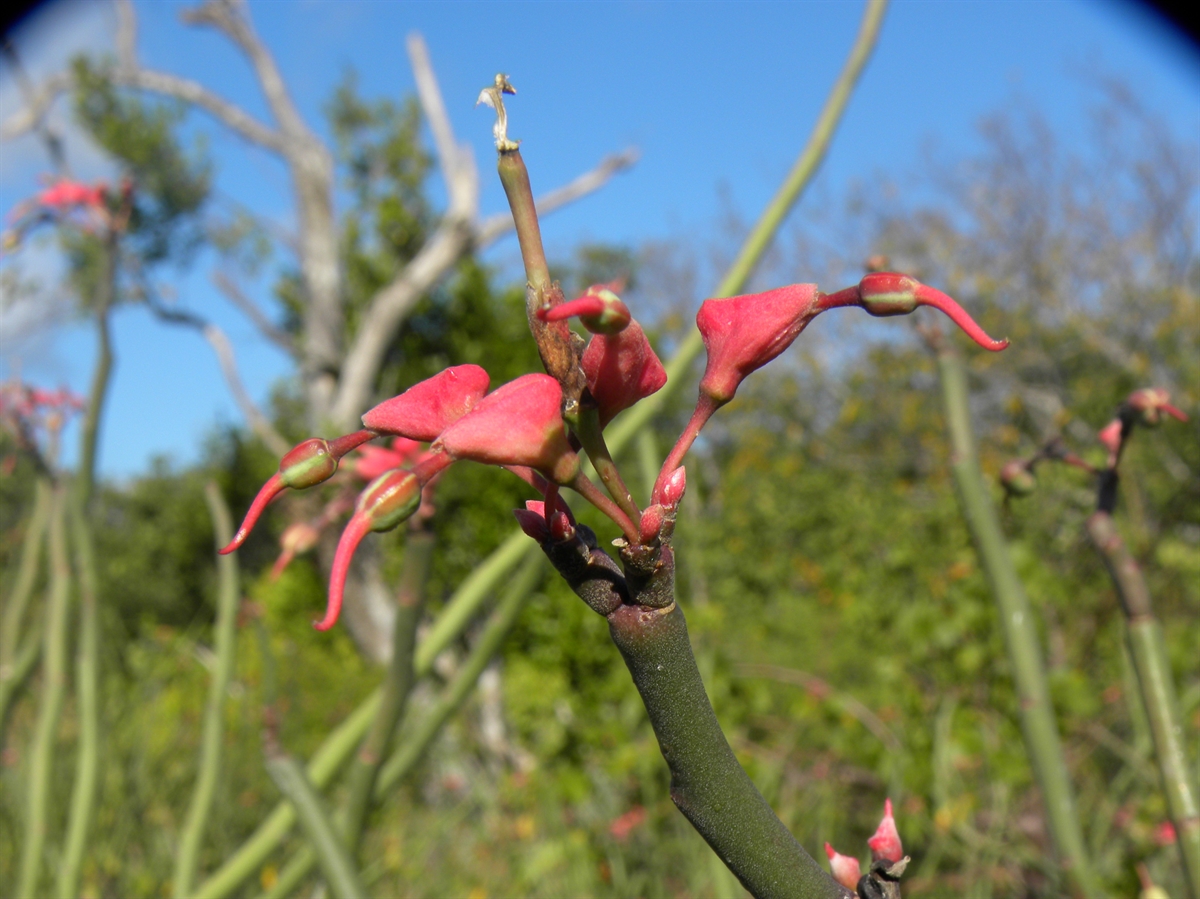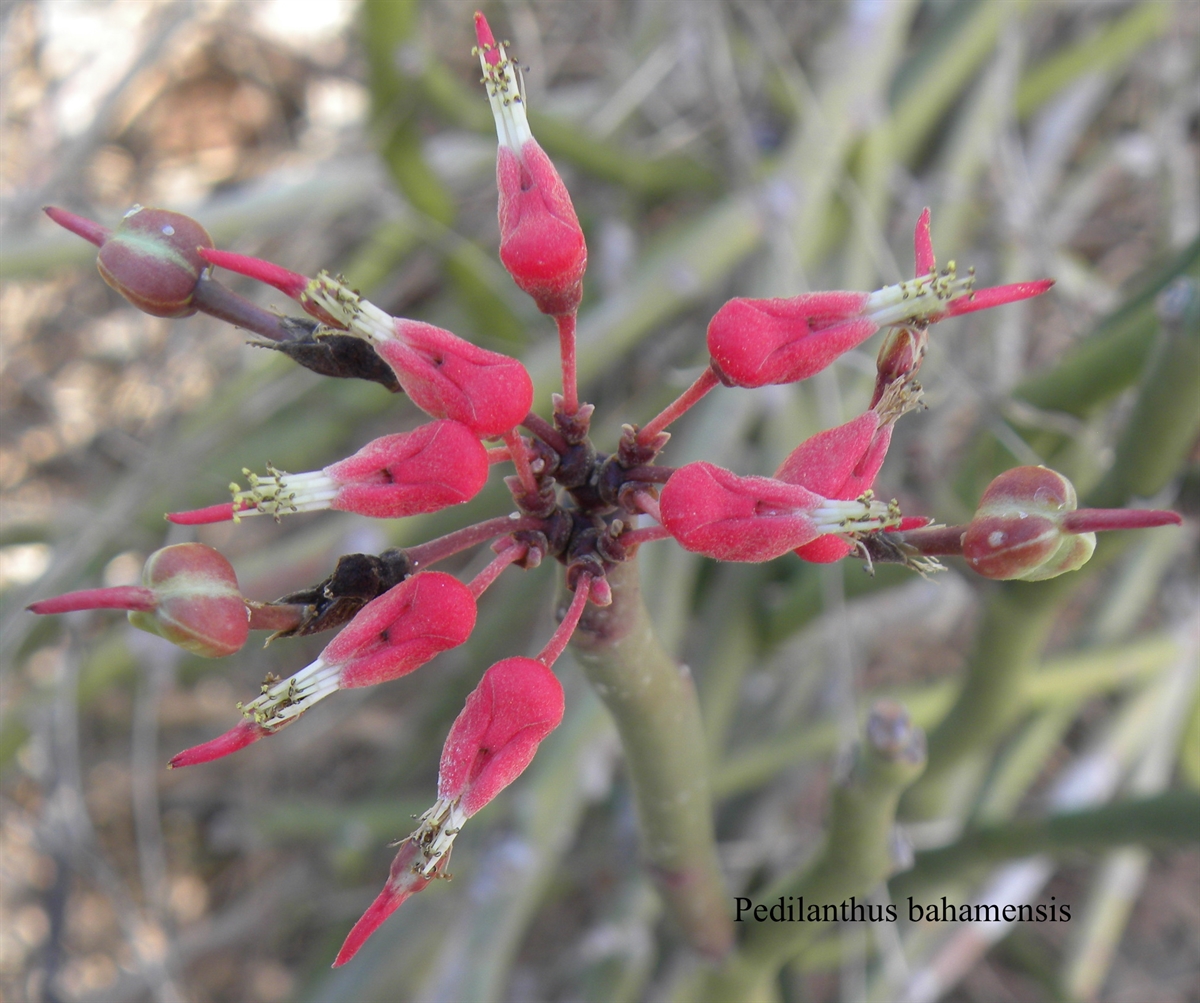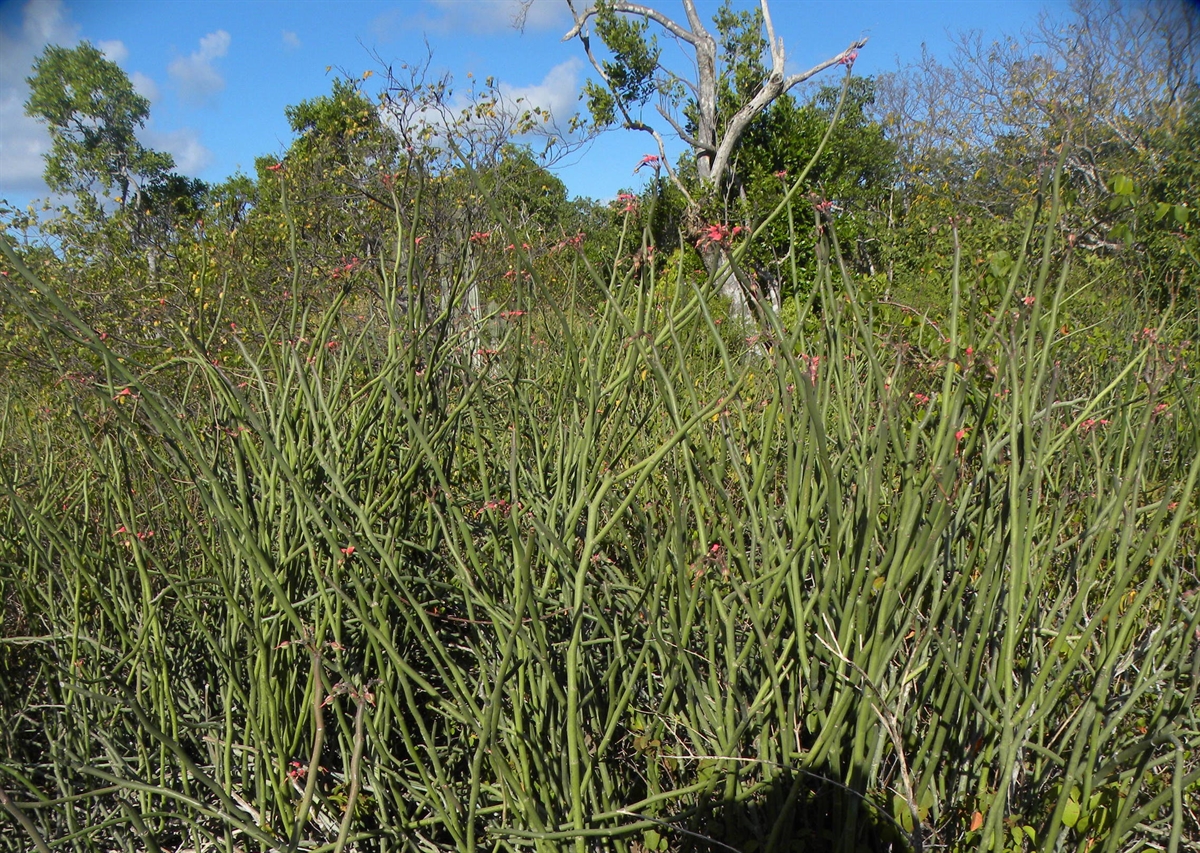Habit: Euphorbia tithymaloides subsp. bahamensis grows as a succulent up to 2 m in height (usually less than 1 m.). The stems are round. The subsessile leaves are arranged alternately, linear with undulating leaf margins. The leaves are early deciduous, and the stem is photosynthetic.
The incomplete, imperfect, are arranged in cyathia in cymes. The cyathia is bright red and strongly zygomorphic. Each cyathia will have numerous staminate flowers and few carpellate flowers. Staminate flowers are reduced to a single stamen. Carpellate flowers are reduced to a single superior carpel, each with 3 locules and numerous seeds. The glabrous fruit is a ridged capsule at maturity that splits along 3 suture lines.
Habitat: Euphorbia tithymaloides subsp. bahamensis grows in Dry Broadleaf Evergreen Formation-s Forest/Shrublands (coppice).
Distribution: Euphorbia tithymaloides subsp. bahamensis is endemic to the Lucayan Archipelago (including the Turks and Caicos Islands).
Medicinal/Cultural/Economic usage: Euphorbia tithymaloides subsp. bahamensis is not known to be used medicinally in the Bahamas.
All parts of the species are extremely toxic and should not be ingested!!
Other subspecies of Euphorbia tithymaloides are used in the horticultural industry.


